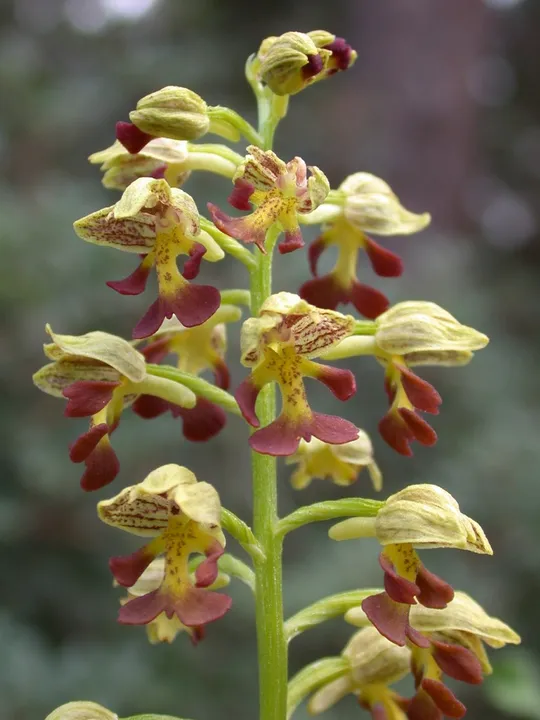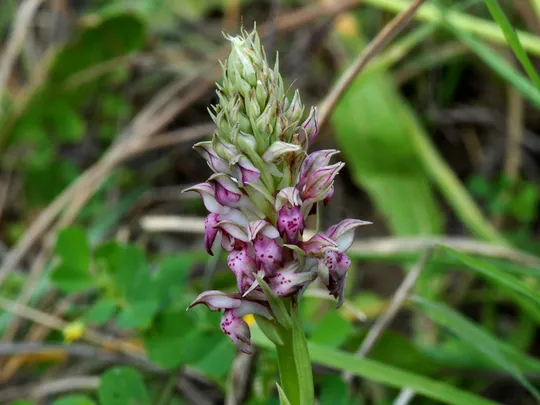Anacamptis israelitica
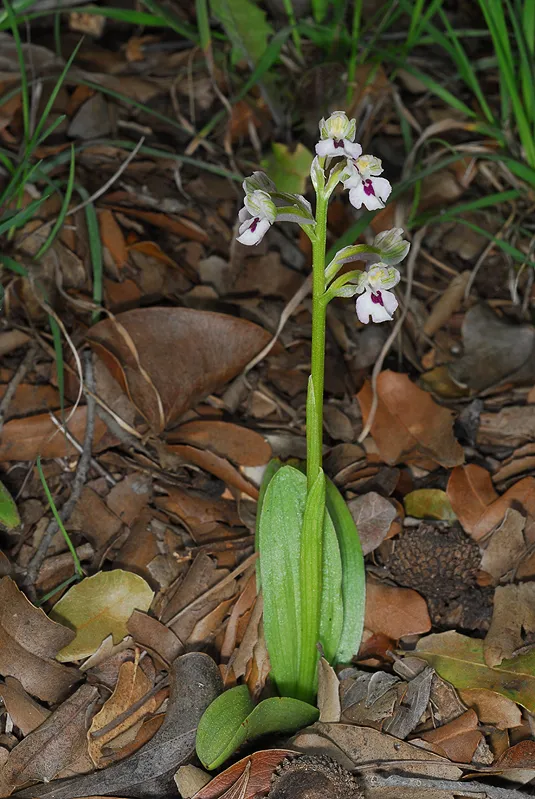
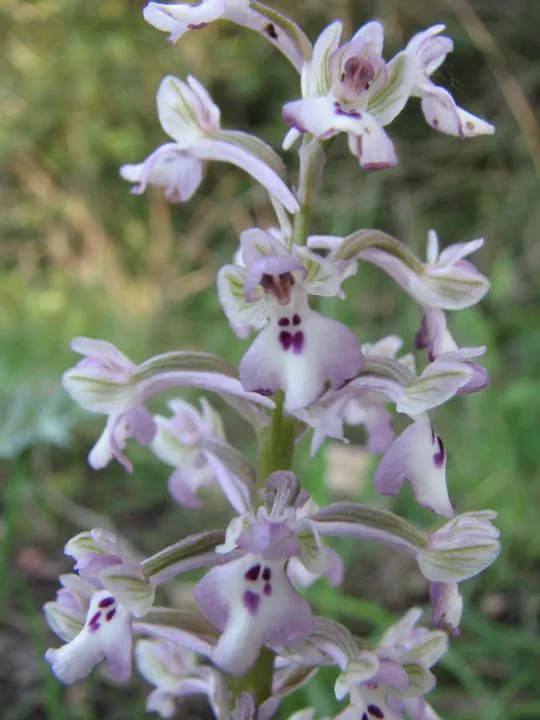
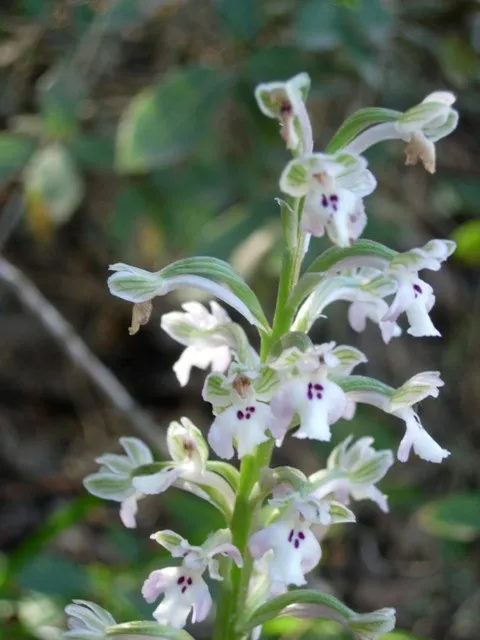
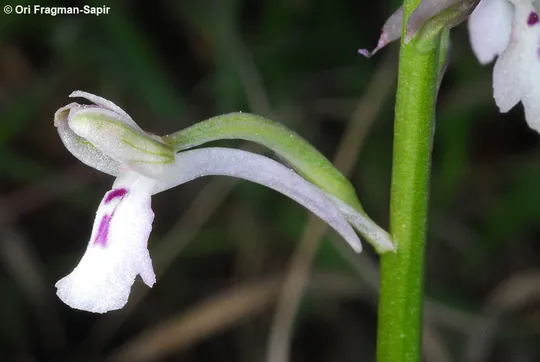
Orchis israelitica grows in the
Upper Galilee, Lower Galilee and Acre Valley (where it was first discovered in
1996 as new to the region by Aviva Rabinovich.) A total of 53 sites were documented.
In the Upper Galilee it is found at 38 sites in the entire Mount Meron area and
west of it. In the Lower Galilee it is found at 14 sites in the Mount Atsmon-Yodfat,
Mount Ahim-Avtalion area and in the Tur'an-Mount Camun area. In the Valley of Acre,
it grows on a single site in the Liman Nature Reserve.
Orchis israelitica grows in the
Upper Galilee, Lower Galilee and Acre Valley (where it was first discovered in
1996 as new to the region by Aviva Rabinovich.) A total of 53 sites were documented.
In the Upper Galilee it is found at 38 sites in the entire Mount Meron area and
west of it. In the Lower Galilee it is found at 14 sites in the Mount Atsmon-Yodfat,
Mount Ahim-Avtalion area and in the Tur'an-Mount Camun area. In the Valley of Acre,
it grows on a single site in the Liman Nature Reserve.
Orchis israelitica is unlike the other Orchis
species in Israel, but is similar and close to O. boryi, a vicarious
specie growing in Crete and in other Greek islands, which is a taller plant
with purple flowers and a less divided labellum. O. israelitica and many other Orchis species
were transferred to the genus Anacamptis based on molecular analyses (Pridgeon
et al, 1997). This change was accepted in several new publications, including
the monograph of the genus Orchis and its relatives (Krestzschmar et al.
2007). According to this monograph, O.
israelitica
and O. boryi belong to Anacamptis sect. Boryae.
Despite the closeness of the two species, they are located on two distinct and
separate branches of the molecular tree; consequently, they were not united as subspecies
of the same species, but were kept as two independent species (Krestzschmar et al.
2007). The two species are also visually
different (Galizia et al. 2004).
·
There are quite a few documented Orchis israelitica sites and the majority
was only recorded from the 1980s. Therefore, it is difficult to provide
reliable assessments of changes and trends in the number of sites compared with
those of the early and mid-20th century.
·
O. israelitica sometimes
appears as an individual plant and sometimes in small groups. In the principal sites,
the total population size can reach hundreds of plants.
·
Disturbances in nature reserves (such
as Mount Meron) and land use changes can affect the populations. Some of the
populations are small and this in itself exposes them to the risk of extinction.
·
O. israelitica is protected on
the Mount Meron Nature Reserve, on the Mount Ahim Reserve and in the Liman
reserve. It is protected by law by virtue of belonging to the family Orchidaceae.
·
O. israelitica is endemic to Israel;
consequently, the local threat level is equivalent to the global threat.
The populations
at known sites should be monitored to learn about long-term trends in its
population dynamics, particularly in the context of protected areas in woodland
or planted forests that develop without interference and shade their
environment.
Orchis israelitica is endemic to
northern Israel, but it possibly also grows in southern Lebanon. Although Feinbrun
noted in the Flora Palaestina that the species is also found in southwest
Anatolia, that is not accepted today (Krestzschmar et al. 2007).
Orchis israelitica is a relatively
rare species found in northern Israel. Its sites are vulnerable to changes in
land use within and outside of reserves. It is of major conservation importance
because it is a species endemic to northern Israel.
(ראה גם ברשימה הכללית)
אייזנבוד, ד. 1986. בני כלאיים בין סחלב פרפרני וסחלב מצוייר. רתם 19: 105-117.
Dafni, A. & Baumann, H. 1982. Biometrical Analysis on Populations of Orchis israelitica, O. caspia, abd their Hybrids (Orchidaceae). Plant Systematics and Evolution 140: 87-94.
Dafni, A. & Ivri, Y. 1981. Floral mimicry between Orchis israelitica Baumann and Dafni (Orchidaceae) and Bellevalia flexuosa Boiss. (Liliaceae). Oeogia 29: 229-232.
Galizia, C.G., J. Kunze, A. Gumhezt, A-K. Bory Karlson, S. Sachse, C. Markl & R. Menzel. 2004. Relationship of visual and olfactory signals parameters in a food-deceptive flower mimicry. Behoral Eogy 2005 16: 159-168.
Shifman, A. 2009. Orchis laxiflora, a New/Old Orchid in Northern Israel. J. Eur. Orch. 41 (3/4): 501-512.
Current Occupancy Map
| 1000 squre meter pixel | 5000 squre meter pixel | 10000 squre meter pixel | |
|---|---|---|---|
| number of observations | 0 | 0 | 0 |
| in total pixels | 0 | 0 | 0 |
| Family | orchidaceae |
| Classification | On the endangered species list |
| Ecosystem | Mediterranean |
| Chorotype | Mediterranean |
| Conservation Site | En HaZaken on Mount Meron, Mount Atsmon, Mount Tur’an |
| Rarity |
1
1
6
|
|---|---|
| Vulnerability |
0
1
4
|
| Attractiveness |
0
1
4
|
| Endemism |
0
4
4
|
| Red number |
1
3.7
10
|
| Peripherality | 0 |
| IUCN category | DD EW EX LC CR EN VU NT |
| Threat Definition according to the red book | Vulnerable |
 Based on:
Based on:
